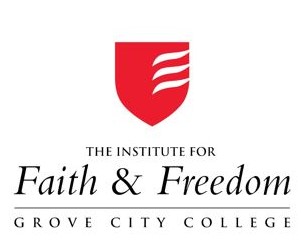Unexpected Lessons from the Jobs Numbers

This column appeared originally at TruthRevolt.org on October 7, 2014
—
Last Friday, the Obama administration celebrated new numbers showing the national unemployment rate plummeting to 5.9% – the lowest official measure of joblessness since the beginning of 2008 and the financial collapse under the Bush administration. While most economists agree that this improvement amounts to encouraging economic news, a closer reading of those Bureau of Labor Statistics numbers provides significant lessons, some of them counter-intuitive, uncomfortable, politically incorrect and deeply revealing.
For instance –
· Despite the growing number of jobs, a record percentage of adults have dropped out of the work force and no longer seek employment. The percentage of workforce participation reached its lowest overall level since 1978 – an astonishing development considering the vastly increased employment of females in the last 36 years.
· Though men have left the work force in greater numbers than women, males still count as vastly more likely to be employed outside the home than women. The male rate of work force participation dropped from 73.1% at the beginning of 2008, to 69.1% today. Among women, only 56.7% currently hold jobs (including part time employment) or look for work. This discrepancy comes despite the fact that for more than a decade, women have out-performed men in winning four-year university degrees. The numbers indicate that women are more likely than men never to have entered the work-force, rather than to leave it in frustration. There’s virtually no difference in current unemployment rates among those seeking work – 6.0% for females, 5.9% for males –so the figures suggest that women are more likely to choose not to work, rather than to suffer workplace discrimination.
· African-Americans have been closing the gap with white people when it comes to unemployment, but still lag behind other ethnic groups in the population.Black unemployment has declined three times more quickly than for whites or Hispanics since 2007, but the September unemployment number for African Americans (11%) remains more than double than for whites (5.1%) and significantly higher than for Hispanics (6.9%). Asians maintain a substantial advantage, with the lowest unemployment (4.3%) of any major racial subgroup in the workforce.
· Though employment numbers remain much lower for blacks, their rate of work force participation is now virtually identical to whites- indicating that African-American problems finding work don’t stem from lack of trying. White work force participation has fallen most sharply – to 62.8% of the adult population, only marginally better than the 61.7% for blacks. The big surprise is the much stronger Hispanic percentage working or looking for work – 65.9%. This reflects in part the younger age of the Latino population, and a cultural work ethic typical of a population with a disproportionately large immigrant component.
· Work-force participation remains surprisingly strong for both men and women at the prime of life while a majority of those below 25 and above 54 don’t hold jobs or look for them. While more than 81% of Americans between the ages 25 and 44 work at jobs or seek work, less than half as many above the age of 54 (39.9%) participate in the workforce at all. Among Americans between 16 and 24, 45.1% do notwork at jobs (even part time) or look for work. The decline of workforce participation among this youngest cohort has been much faster and more pronounced than among any other group in the population. The numbers don’t so much indicate a collapse in the traditional American emphasis on hard work as they portray the shrinking duration of the typical work life – with many Americans getting jobs later than ever (in part due to extended schooling) and leaving those jobs earlier than ever.
· A college degree sharply reduces chances of unemployment, but those who attend university without completing their studies do even more poorly than those who terminate their education with high school diplomas. Despite horrifying reports of recent college graduates facing huge obstacles in finding work, the overall rate of unemployment among those with a Bachelor’s degree or higher has fallen to a minuscule 2.9%. Since 3% joblessness generally qualifies as “full employment” this indicates that those who once earned a BA or more – including those above the age of 55 – are highly likely to find work, eventually. Meanwhile, even those who graduated high school but went no further face an unemployment rate of only 5.3% — significantly below the national average of 5.9%. Intriguingly, these high school grads fare slightly better than those who report “some college” or a community college “Associate’s Degree” who face joblessness of 5.4%. A possible explanation? A resume’ that shows some participation in post secondary education without completing a four-year degree might suggest to a prospective employer that the applicant is a quitter, incapable of completing a major goal.
· High School dropouts are nearly three times more likely than college grads to find themselves unemployed. Those without secondary school diplomas face jobless rates of 8.4%, compared to 2.9% for those with four year degrees. But even for those with no high school credential, the improving economy provides jobs for an impressive 91.6% of all those who seek work.
These numbers raise serious questions when examined closely. For instance, it seems obvious that the emphasis on getting more and more young people to start college is misplaced; we should stress instead the importance of finishing college in order to assure better economic outcomes. A young person who begins university studies and incurs substantial debt may well fare worse in the job market than an individual who completes high school and enters the workforce immediately. The truly devastating handicap in terms of finding employment involves the lack of a high school diploma, not the absence of a college degree.
Moreover, the obstacles faced by blacks and Latinos in catching up with whites in the job market doesn’t reflect lower participation in the work force for people of color, since blacks hold and seek jobs in virtually identical proportions to whites, while a substantially greaterpercentage of Hispanics work or seek work.
Finally, the detailed employment numbers serve to undermine an endlessly recycled and wrong-headed assumption that helps to define political correctness when it comes to gender roles. According to “enlightened” contemporary notions, jobs are just as important to women as they are to men, but the numbers show a much greater proportion of females than males (43% to 31%) who are unwilling or unable to participate in the workforce. A contrast of that magnitude surely reflects the demands of motherhood (with single mothers vastly outnumbering single fathers) but must also result from some element of choice. While accumulated statistics show all Americans suffering from long years of recession and slow growth, they also indicate that men and women, black and white and young and old, make personal educational and employment decisions that help shape very different outcomes in the job market.




















